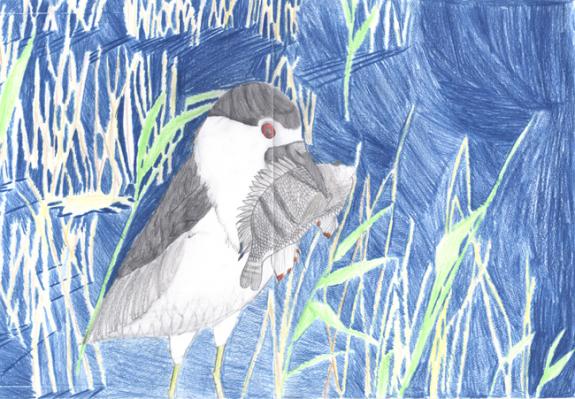Kyle Bogado, Auten Road Intermediate School
Somerset County
Black-crowned Night Heron
It's 1920 and I'm stalking my prey at night. When I start to close in on it I hear the sound of gunshots and it is not longer in sight. Unfortunately, a lot of black-crowned nigh herons die from poachers to sell our feathers. So I take off as soon as I can. Therefore I'm able to bring some food back to the nest. As I'm in flight my black, gray, and white feathers shine in the moonlight.
Snack time is awesome! Munching on a fish, some types of crustaceans, aquatic insects, terrestrial insects, earthworms, leeches, mollusks, toads, salamanders, snakes, lizards, eggs, small mammals, and carrion makes my day. I swoop down to catch a crab and come back in the sky swiftly.
I land in my nest with the crab in my clutches and I lay down in my comfortable nest made of sticks, twigs, reeds, roots, grass, and pine needles. I love to snooze when the run rises since I'm nocturnal. Time goes on and by the time it's 1930, the people made a law to ban my feather sales in New York markets. By then, the black-crowned night heron was common along the Atlantic coast. In the 1940s and 1950s make black-crowned night herons lost their habitats from coastal dune forest destruction. In 1970 there were a total of 1500 in New Jersey. In 1990, there were only 200 in New Jersey. By 1999 we were put on the NJ Threatened List.
A big way to help our species is to not develop, fill, drain, illegally dump, pollute, or any other human disturbance in marshes or wetlands. If you do this the black-crowned nigh heron may be common along the Atlantic coast again.
Kyle Bogado
Auten Road Intermediate School
Hillsborough, NJ
Mrs. Karen Matthews





